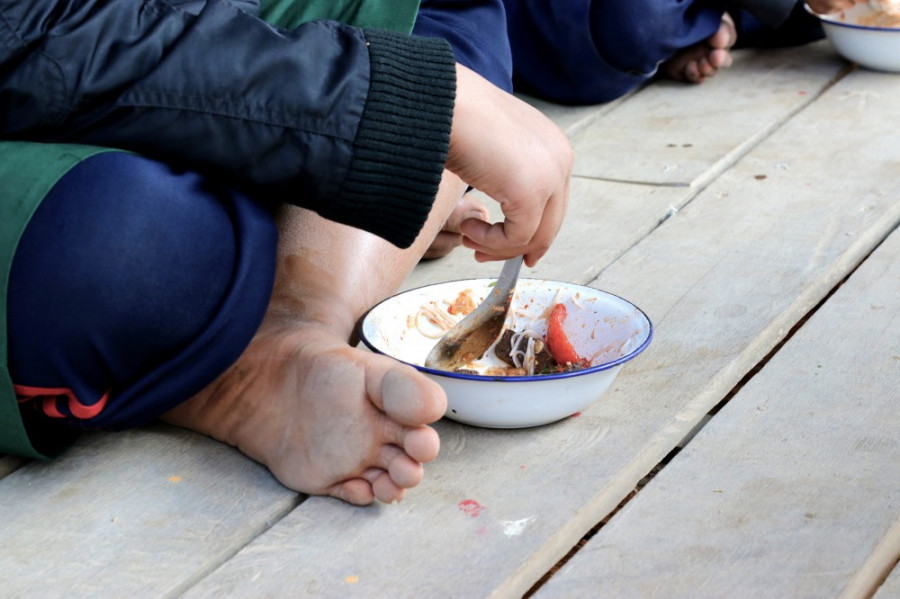Health
Malnourished children deprived of care as nutritional rehabs are converted into isolation facilities
Doctors warn child and infant mortality will increase, and years of effort and investment in reducing child mortality will go to waste, if the issue is continuously ignored.
Arjun Poudel
There were 12 children at the Sunakothi-based Nutritional Rehabilitation Home, a residential facility for severely malnourished children, in Lalitpur until two days before the prohibitory orders were imposed in the Kathmandu Valley last month.
But soon after the government announced the prohibitory orders amid a sharp spike in Covid-19 cases in the capital, parents of the children who were mostly from outside the Valley, collected their wards and returned to their respective villages.
“We have converted the facility into an isolation center for Covid-19 patients,” Sunita Rimal, programme coordinator of the malnutrition prevention and treatment programme of Nepal Youth Foundation, a non-governmental organization that runs the nutritional rehabilitation home, told the Post. “We have been running a 50-bed isolation center here.”
Along with the Sunakothi-based nutrition rehabilitation home in Lalitpur, three other such facilities in Biratnagar, Nepalgunj and Hetauda have also been converted into isolation centers. The residents of these homes, severely and moderately acute malnourished children, were discharged despite knowing that they needed institutional care and treatment.
Doctors say severely acute malnourished and moderately acute malnourished children are not getting treatment means they are at a higher risk of dying from malnutrition.
“Only severely acute and moderately acute malnourished children are referred to the nutrition rehabilitation homes,” Kedar Parajuli, chief of nutrition section at the Family Welfare Division, under the Department of Health Services, told the Post. “We are unaware of the latest condition of malnutrition.”
There are 22 nutrition rehabilitation homes operating throughout the country. Doctors refer severely and moderately acute children to these homes.
But with the rise in Covid-19 infections throughout the country and restrictions in transportation and public movement, people have stopped taking their malnourished children to the health facilities, thereby depriving the children of the much-needed treatment.
Last year also, during the first wave of the Covid-19 pandemic, several nutrition rehabilitation homes were converted into isolation facilities. And it often takes several months to vacate them.
“This time also we struggled hard to prevent these centers from being used as Covid isolation centers, but to no avail,” said Parajuli. “What is concerning now is that even health workers are not taking nutritional problems seriously.”
Malnutrition is developing into a silent crisis in Nepal. The country has made significant progress in reducing stunting among children under five. Stunting decreased from 57 percent in 2001 to 32 percent in 2019, according to the recent Multiple Indicator Cluster Surveys (MICS 2019).
Wasting, a debilitating disease that causes muscle and fat tissue to waste away, among children under five was 11 percent in 2001, 10 percent in 2016 and 12 percent in 2019.
Anaemia among children under five is still at 51 per cent (NDHS 2016), which experts say is concerning.
Doctors say child and infant mortality will increase, and years of effort and investment in reducing child mortality will go to waste, if we keep ignoring the issue continuously.
“Our nutrition rehabilitation home will be vacated only when the Covid-19 infections decline,” said Rimal of Sunakhoti’s nutrition rehabilitation home. “Children needing institutional care and treatment will be deprived until then.”
Nutritionists say that the ongoing coronavirus pandemic, which has gripped the entire nation, poses grave risk to the nutritional well-being and survival of underage children.
“We all know that the pandemic has rendered a lot of people jobless and as a result their income sources have dried up, and many others are unable to access essential health services either due to fear of infections or stoppage in the services,” Dr Atul Upadhyay, a nutritionist, told the Post. “If this problem is not addressed by the authorities on time then it could cause another crisis.”
Nepal has an international obligation to improve the conditions of malnourished children.
The country needs to reduce the stunting to 15 percent from the existing 32 percent by 2030 to meet the the United Nations-backed Sustainable Development Goals (SDGs) targets, wasting to 4 percent from the current 12 percent, underweight to 10 percent from the existing 27 percent and anemia to 10 percent from over 52 percent in 2016.
SDGs-a follow-up on the Millennium Development Goals (MDGs), aim to end poverty and hunger and all forms of inequality from the world by 2030 and Nepal has committed to meet the goals.
“Even before the pandemic, Nepal’s nutritional problems were alarming and despite various efforts, the problems were not declining,” said Upadhyay. “At a time when authorities are focussing mainly on containing the spread of Covid-19 infections, they should not forget that nutritional problems will have long-term impacts not only on people’s health but also on the country’s overall development.”




 11.12°C Kathmandu
11.12°C Kathmandu














